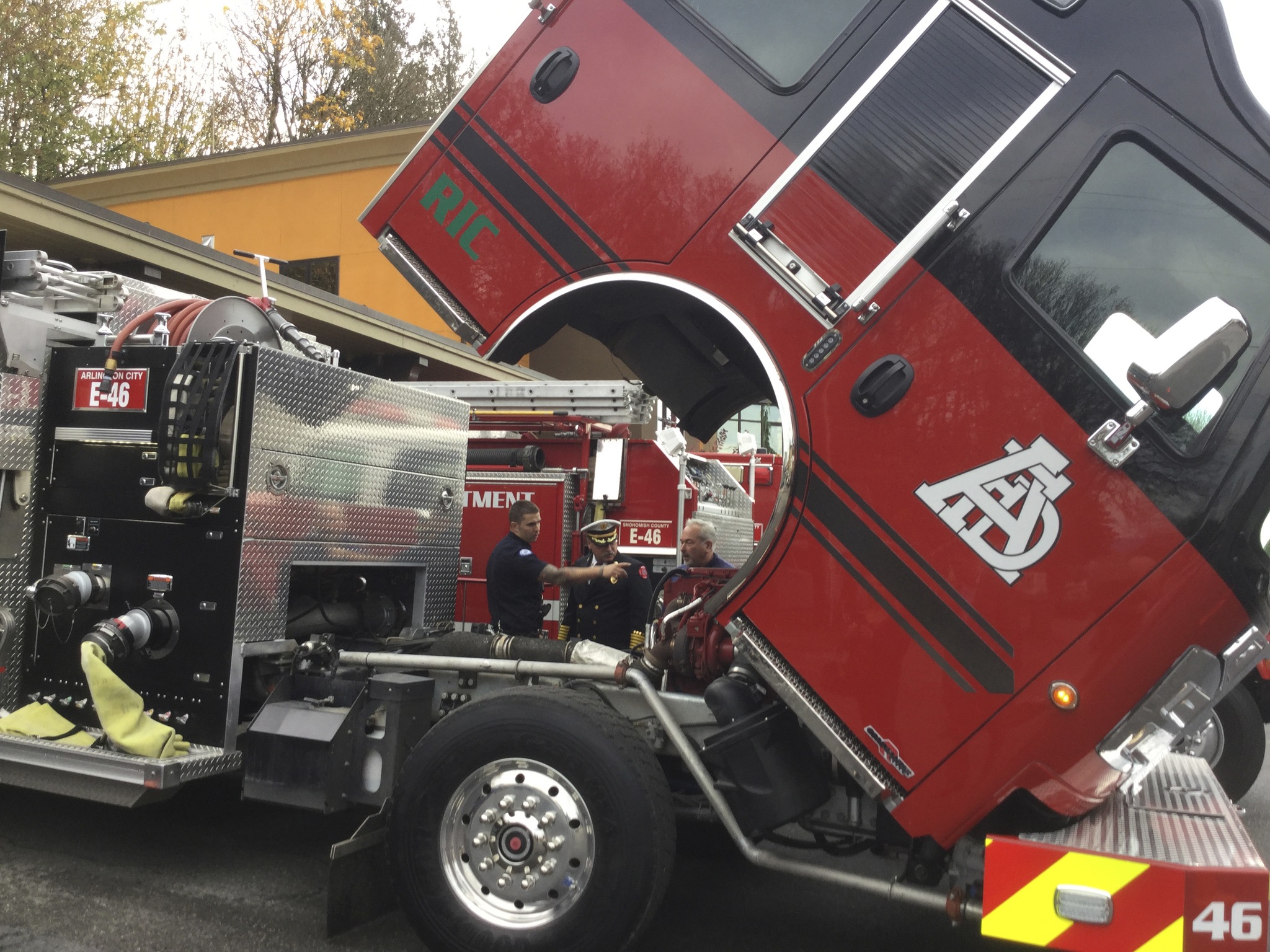By Douglas Buell
dbuell@arlingtontimes.com
ARLINGTON – During the Fire Department annual inspection two years ago, attendees got a dramatic firsthand look at Arlington firefighter-EMTs’ professionalism in action.
They had to rush to administer Narcan to revive an overdosed heroin addict whose desperate brother brought him to Station 46.
“Our first responders saved that person’s life right in front of our eyes,” Fire Chief Bruce Stedman said.
Department personnel since then have saved many more people addicted to heroin and other opioids, provided paramedic services for residents with emergency medical needs, and put themselves in harm’s way battling structural fires.
The fire department hosted this year’s inspection Nov. 4. The inspection gives city and county elected officials a once-over of Arlington’s three stations, ladder trucks and emergency vehicles, and firefighters and paramedics.
Stedman said the inspection is an opportunity to assure elected leaders that well-trained professionals and apparatus are ready when the firehouse alarm sounds.
“We want to make sure that you have confidence in us,” Stedman told City Council members present, and joined by county council member Ken Klein of Arlington. “You should expect the best level of service. We’re also making sure that you know you’re getting the most bang for your buck with the public’s money.”
Department members spend hours cleaning and making sure the vehicles and equipment are in top shape, Stedman said. They even pressure washed the Station 46’s brick facade, and inspected the stainless steel barbecue gas grill outside the main entrance.
Serving an Arlington population of 18,620, the fire department’s priorities are firefighter support, protecting community life and property, and reducing liability.
“The troops do a phenomenal job,” Stedman said.
In 2015, the fire department responded to 4,846 service calls and is on track to reach 5,475 by year’s end, a 12 percent jump.
While inspecting the troops’ gear, Stedman spoke about the high rate of firefighters in the U.S. who are dying from cancer – 67 percent, by some estimates.
Firefighters have higher rates of cancer than the U.S. population, according to a study by the National Institute of Occupational Safety and Health. Cancers of the respiratory, digestive and urinary systems account for much of the reported cases, the study found.
Firefighters also account for double the reported cases of mesothelioma, a rare cancer associated with asbestos.
The study found a link to carcinogens in the “turnouts,” or flame-retardant attire that personnel wear to protect themselves when going into a blaze. Another source: household items containing chemicals toxic to people and animals, to which firefighters are also exposed.
In response, Arlington firefighters work to minimize their exposure at fire scenes and keep sets of gear to swap out, Stedman said. Turnout gear is designed to last 10 years, and the department is working to purchase enough inventory so that each firefighter has backup gear.
At $2,800 per set, the gear can get costly, but the city has budgeted funding for equipment to help reach the goal.
As a precaution, the department hoses down their gear before they even leave a scene. They also use a special extractor washing machine at the station designed solely for turnout gear, Stedman said. As a further policy for firefighter safety, pants and boots are not permitted in the living and sleeping quarters.







